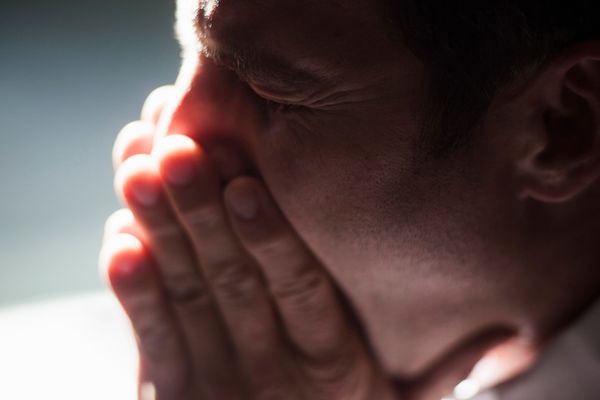Attending a funeral isn't on anybody's list of fun things to do; but you loved dear old Great Aunt Fern and are glad to pay your respects. Just as the room quiets and the opening prayer starts, you feel a familiar tickle in your nose and begin to fight off a sneeze.
You try to ignore it by breathing slowly out through your nose, but nothing works. Finally, you press your fingers against your upper lip and, thankfully, the urge to sneeze subsides. It's a good thing, too. Your noisy, violent sneezing fits are legendary and you definitely aren't interested in being the focus of everyone's attention.
Advertisement
There's plenty of anecdotal evidence that pressing your fingers against your upper lip can stifle a sneeze. Stimulating this area can short-circuit the signals the brain is sending through facial nerves. When you activate the nerves above your top lip, it also affects nerves inside your nasal passages. These nasal receptors relay this information back to the nerve center in the brain, intercepting the signal it is sending out to make you sneeze [source: Encyclopedia Britannica].
Turns out, pressing against your fingers against your upper lip is one of the best ways to stop a sneeze before it starts. Other methods, such as holding your nostrils shut, can force a powerful explosion of air through the Eustachian tube, which can potentially damage your eardrums. This could lead to a hearing deficit and long-term dizziness. In fact, a blocked sneeze could force mucus up into the Eustachian tube, and if that mucus is infected, it could set up camp in the middle ear and cause a raging ear infection.
You have little control over a sneeze. It's a largely reflexive process that happens when something like dust or pollen irritates your nasal cavities. As with any reflex, sneezing follows a reflex arc that follows a path from a receptor to an effector [source: Medicalook].
Sneezing occurs when the receptors (or nerve endings) in the nostrils come into contact with an irritant. As a result, the nerves carry impulses to the limbic system (or sneezing center) in your brain stem. The sneezing center then sends impulses along facial nerve pathways, as well as nerves in the lungs and diaphragm that causes your nasal passages to secrete fluid and your eyes may begin to water.
Suddenly, your diaphragm contracts and you take an involuntary deep breath. Immediately after, the muscles in the chest and throat contract and push air out of the nose and mouth in a sneeze that can register up to 100 miles per hour [source: Bennett]. The fact that you can successfully stop that sneeze using only a couple of fingers pressed against your upper lip is nothing short of impressive.
Advertisement


